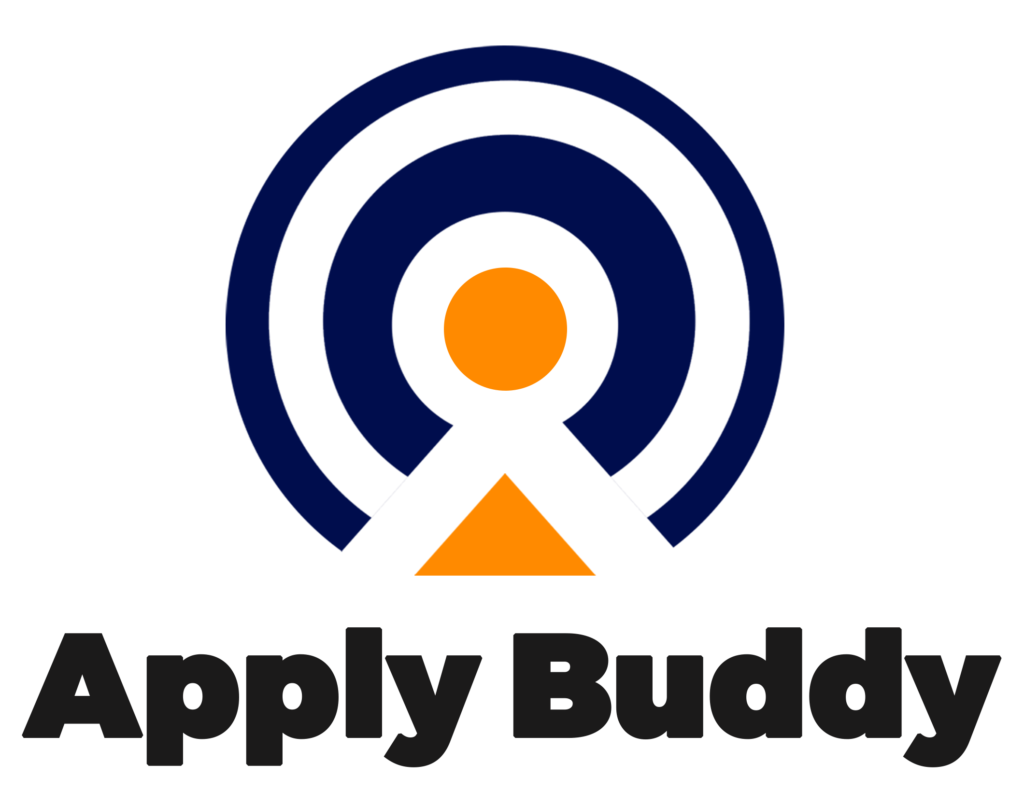Preparing for an interview presentation is a word that many professionals and newbies look forward to and kind of dread. Interviews present you with open doors and a chance to snag opportunities in a session within as little as 7 minutes. Interview skills are a must-have for every professional. According to Marketsplash, 95% of people think first impressions matter, but many have failed to ace this vital interview component and other tips that could present you favourably in the short and long term. Our 10 steps to plan a great interview presentation guide will provide you with the right approach, a powerful tool to showcase your skills and leave a lasting impression. Whether you’re vying for a corporate or creative role, following a structured plan will help you deliver an outstanding presentation.
Preparing for your next interview is sure to be successful and insightful, as shown by the tips we have curated below. So stick around and follow through to brush up on your skills and learn new ones.
See Also: What to Wear for an Interview
What is an Interview Presentation Topic?

An interview presentation topic is the subject or theme you are asked to present during an interview. Typically, the topic is related to the role you’re applying for and serves as a way for employers to assess your knowledge, communication skills, and how you approach problem-solving. The topic might be assigned to you by the employer, or you might be asked to choose one yourself, depending on the nature of the job. There are no 10 steps to plan a great interview presentation topic if you don’t understand the end goal or central idea. Understanding the topic thoroughly is essential, as it sets the foundation for your entire presentation.
Interview presentation topics are typically designed to test your knowledge and skills relevant to the position you’re applying for. They may focus on industry-specific challenges, company projects, or hypothetical scenarios that reflect the natural work environment. How you handle this task offers insights into your problem-solving abilities, understanding of the role, and fit within the company culture.
Common types of interview presentation topics include;
- Industry Trends: You might be asked to present current trends, demonstrating your awareness and strategic thinking.
- Case Studies: Presenting solutions to hypothetical or past business challenges, showing how you approach problem-solving.
- Role-Specific Scenarios: For example, a sales candidate might be asked to pitch a product, while a project manager might outline a plan for delivering a project on time and within budget.
- Personal Achievements: Discussing a significant accomplishment in your career relevant to the role can highlight your qualifications and potential contributions.
See Also: How to Answer Difficult Interview Questions
Steps to Plan a Great Interview Presentation

Success in delivering an interview presentation topic comes down to thorough preparation. Research the company, understand the job requirements, and align your presentation to reflect how you can add value. Tailoring your content to the audience and anticipating possible questions will enhance your presentation’s effectiveness.
In summary, an interview presentation topic is not just about what you say but how you say it. It’s an opportunity to demonstrate your skills, knowledge, and suitability for the role, making it a critical component of the interview process. Find below 10 steps to plan a great interview presentation;
Understand the Presentation Requirements
Before crafting your presentation, you must understand precisely what is expected of you. Understanding presentation requirements will help you tailor your content and delivery to effectively meet the employer’s expectations. Carefully read the brief or guidelines provided by the employer, and don’t hesitate to ask for clarification if anything is unclear. Key points to consider include:
- Time limit: Ensure your presentation fits within the allotted time.
- Audience: Know who will watch your presentation—this will influence your tone, language, and content.
- Format: Determine whether the presentation will be in person, virtual, or hybrid, and prepare accordingly.
- Content focus: Identify what the employer seeks—creativity, analytical thinking, problem-solving, or industry knowledge.
See Also: How to Prepare for an Interview
Research the Company and Role
Before diving into your presentation’s details, thoroughly research the company and the specific role you’re applying for. Understanding the company’s values, mission, products, services, and industry position will help you tailor your presentation to align with their needs. Additionally, research the role itself to understand the key responsibilities and challenges, which can guide the focus of your presentation.
- Company Culture: Understanding the company culture can help you craft a presentation that resonates with the audience.
- Industry Trends: Stay informed about the latest trends, showing you’re up-to-date and forward-thinking.
- Competitors: Knowing the company’s competitors can help you address industry challenges and opportunities in your presentation.
Define Your Key Message
A successful presentation has a clear, compelling key message that ties everything together. This message should be the main takeaway you want your audience to remember. Your key message is vital as it will be prominent for the rest of your presentation. A weak key message may lead to apathy from the recruiter. To define your key message:
- Identify the Core Idea: What central point do you want to convey? This could be a solution to a problem, a strategy for growth, or a demonstration of your skills.
- Support with Evidence: Use data, examples, or case studies to support your key message.
- Keep It Concise: A clear, concise message is more accessible for your audience to remember and will keep your presentation focused.
Create a Structured Outline

With your key message in mind, create a structured outline for your presentation. A well-organised outline will help you stay on track and ensure your presentation flows logically. It is not only about great ideas but a great presentation. Clear outlines will increase retail interest and aid accessibility and comprehension, which are a huge plus.
- Introduction: Start with a brief introduction that outlines what you will cover.
- Main Points: Break down your presentation into 3-5 main points, each supporting your key message.
- Supporting Details: Under each main point, include supporting details like data, examples, or anecdotes.
- Conclusion: Wrap up with a firm conclusion that reinforces your key message and leaves a lasting impression.
See Also: How Tosin Aced His Technical Interview Task and Landed a Data Analyst Role
Design Visually Appealing PowerPoint Slides
Visuals play a crucial role in keeping your audience engaged. Design slides that are visually appealing and effectively convey your message. Imagine designing clumsy slides, lack clarity and fail to express your point, your goal of making a good imoression will be an utter fail. To ace your PowerPoint slides, go over these tips;
- Keep It Simple: Avoid cluttered slides. Use bullet points, short phrases, and keywords instead of long paragraphs.
- Use High-Quality Images and Graphics: Relevant images, graphs, and charts can make your presentation more engaging and easier to understand.
- Consistent Design: Use consistent fonts, colours, and layouts throughout your presentation to maintain a professional look.
- Limit Text: Too much text can overwhelm your audience. Focus on key points and use visuals to support your words.
Practice Your Delivery
Practising your delivery is among the 10 steps to plan a great interview presentation and is just as important as preparing the content. The more you practice, the more confident and polished you will appear during the presentation. You can easily do this in front of your mirror at home or present to a loved one to get feedback and make adjustments before your big day. Use these tips below;
- Rehearse Multiple Times: Practice your presentation several times to get comfortable with the content and timing.
- Record Yourself: Recording your practice sessions can help you identify areas where you can improve, such as pacing, tone, and body language.
- Get Feedback: Practice before a friend or colleague and ask for constructive feedback.
- Refine Your Timing: Ensure your presentation fits within the allotted time, allowing for any questions or discussions at the end.
Prepare for Questions
Anticipating and preparing for questions is crucial in delivering a successful interview presentation. This shows your depth of knowledge and ability to think on your feet. Questions test how much you know about your presentation, so get ready using these steps;
- Predict Potential Questions: Based on your presentation content, consider what questions the interviewers might ask. Consider questions about the data you present, your thought process, and how you arrived at certain conclusions.
- Prepare Clear, Concise Answers: Prepare clear, concise answers for each potential question. Avoid overly technical jargon unless it’s appropriate for the audience.
- Stay Calm and Collected: If you’re asked a question you didn’t anticipate, stay calm. Take a moment to think about your response and answer confidently. If you’re unsure, it’s okay to admit it and offer to follow up with more information later.
Test Your Technology
Technical issues can derail even the most well-prepared presentation. To avoid this, thoroughly test all your technology ahead of time.
- Check Your Equipment: Ensure that your laptop, projector, microphone, and any other equipment you’ll be using are functioning correctly.
- Test Your Software: If you’re using PowerPoint or Google Slides, check that everything works smoothly, including transitions and embedded media.
- Have Backups Ready: Bring backups of your presentation on a USB drive or cloud storage. Consider printing key slides or notes as a precaution.
- Familiarise Yourself with the Venue: If possible, visit the presentation venue beforehand to test the setup and get comfortable with the space.
Time Your Presentation
Managing your time effectively during your presentation is crucial. You don’t want to rush through or run out of time before you’ve covered your key points. Time management is also a critical skill that sets you apart. This is why you must pay heed to these tips;
- Rehearse with a Timer: Practice your presentation while timing yourself. Aim to finish a few minutes before your allocated time to allow for questions and discussions.
- Prioritize Key Points: Know what priorities are most important so you can adjust your presentation on the fly if you’re running short on time.
- Stay Mindful of Pacing: Speak steadily, allowing your audience to absorb the information. Avoid speaking too quickly due to nerves or trying to squeeze in too much content.
Seek Feedback
Feedback is invaluable among the top 10 steps to plan a great interview presentation to improve delivery. Be on the lookout for constructive criticism and be careful when sifting through feedback so you do not lose originality to please your reviewer. This is why you should follow these steps;
- Practice with a Peer: Present before a trusted friend, family member, or colleague and ask for honest feedback on your content, delivery, and slide design.
- Focus on Areas for Improvement: Constructive criticism is vital to growth. Please pay attention to areas where you can improve, whether it’s the clarity of your message, your body language, or how engaging your slides are.
- Incorporate Feedback: Use the feedback to make necessary adjustments. This might involve tweaking your slides, refining your key message, or adjusting your speaking style.
See Also: How to Overcome Interview Anxiety
Conclusion
Mastering an interview presentation requires thoughtful preparation, from understanding the presentation requirements to practising your delivery. You can ensure your presentation is compelling and professional by following these 10 steps—researching the company and role, defining your key message, designing visually appealing slides, and more. Don’t forget to anticipate questions, test your technology, and manage your time effectively. Seeking feedback and refining your presentation based on constructive criticism will also help you deliver a polished and confident performance. With these strategies, you’ll be well-equipped to impress your interviewers and secure the job.
Why ApplyBuddy is Essential for Your Interview Success
With ApplyBuddy, you gain access to tailored guidance on selecting and preparing compelling interview presentation topics that resonate with employers. Whether it’s industry trends, case studies, or role-specific scenarios, ApplyBuddy provides the insights and resources you need to shine. We have lots of packages tailored to meet your needs.
FAQs for 10 Steps to Plan a Great Interview Presentation
1. How should I handle unexpected technical issues during the presentation?
If technical issues arise during your presentation, stay calm and composed. Address the problem briefly and try to resolve it, but don’t let it derail your entire presentation. A backup plan, such as printed handouts or a saved copy of your presentation on a USB drive, can be helpful. If the issue is beyond your control, communicate with your audience about the situation and proceed as best as possible without the technology.
2. What should I do if I don’t know the answer to a question?
It’s okay not to have all the answers. If you’re asked a question you don’t know, be honest and say something like, “That’s a great question. I don’t have the information now, but I can look into it and follow up with you.” This shows integrity and a willingness to learn. You can also offer a well-informed guess based on your knowledge but clarify that it’s not a definitive answer.
3. How can I tailor my presentation to different audiences?
To tailor your presentation to different audiences, start by understanding their background, interests, and level of expertise. Adjust your language, examples, and depth of detail accordingly. For a technical audience, you might include more detailed data and industry-specific terms. For a non-technical audience, simplify complex concepts and focus on broader implications or benefits. Always keep your key message clear and relevant to the audience’s needs and expectations.
4. What are some tips for managing presentation anxiety?
Managing presentation anxiety starts with thorough preparation. Practice your presentation multiple times until you feel confident with the content and flow. Use deep breathing exercises before your presentation to calm your nerves. Visualize yourself succeeding, Visualise on the message you want to convey rather than the possibility of making mistakes. Engage with your audience early to ease anxiety, making the presentation more like a conversation than a performance. Remember, it’s normal to feel nervous—channel that energy into enthusiasm for your topic.
